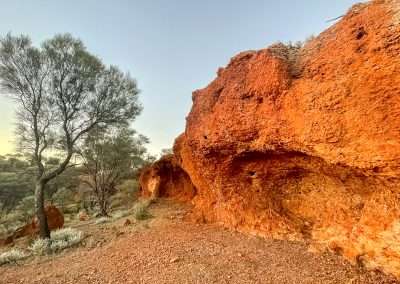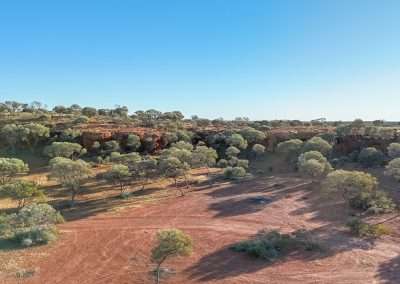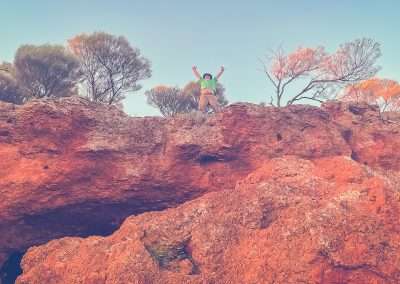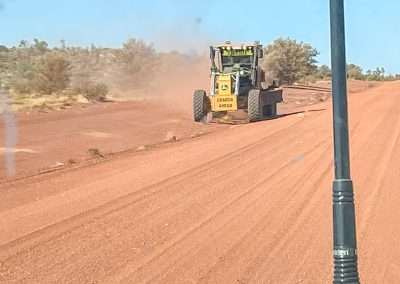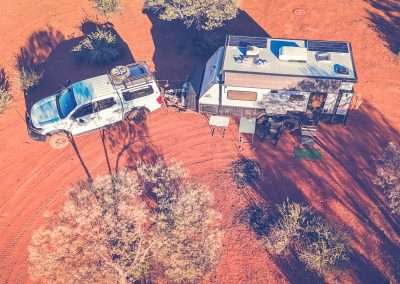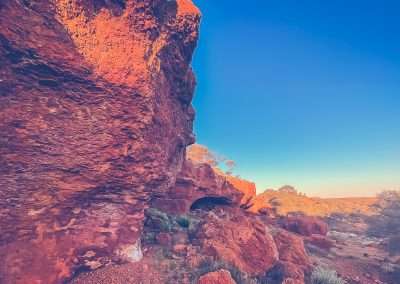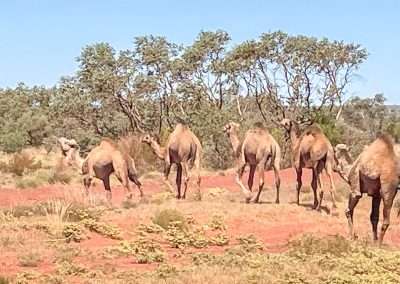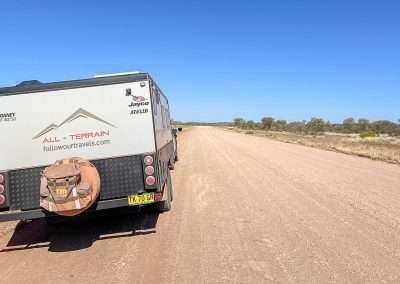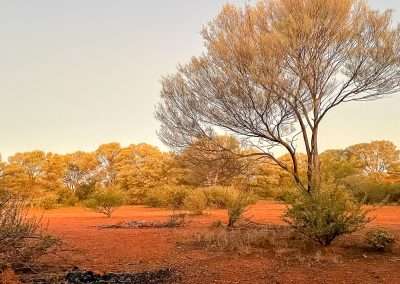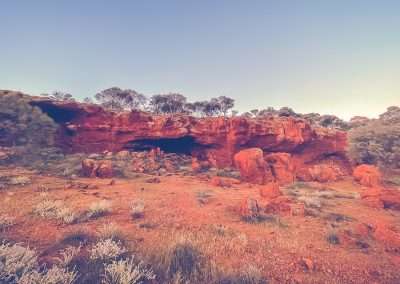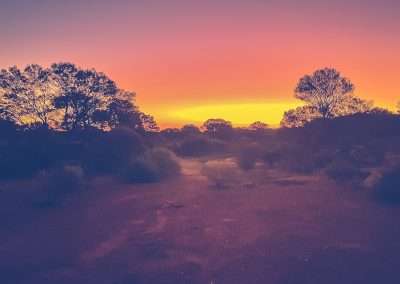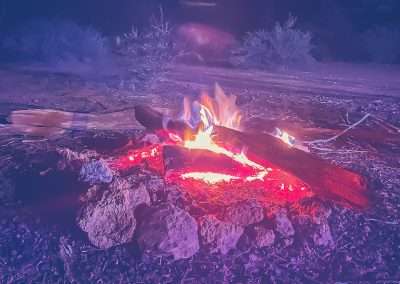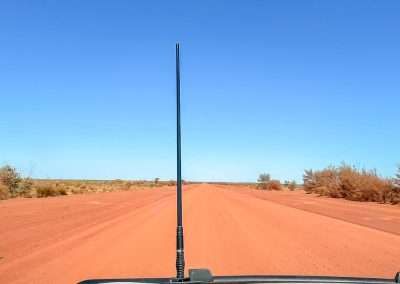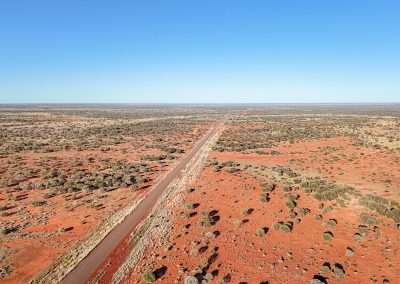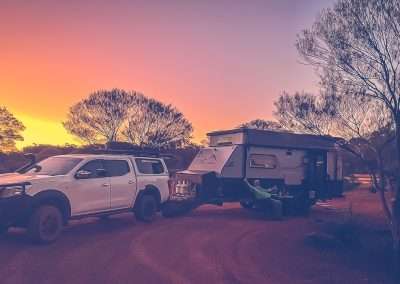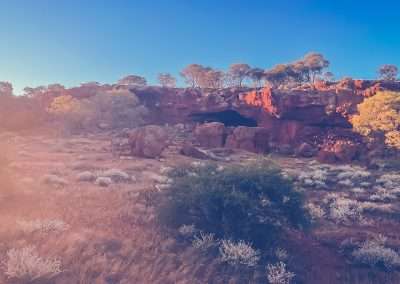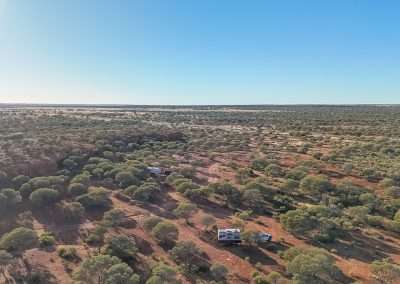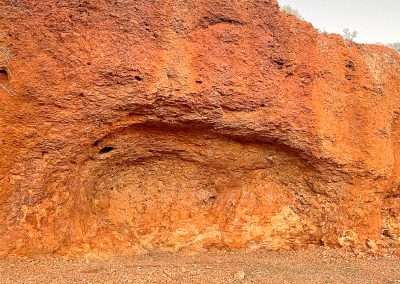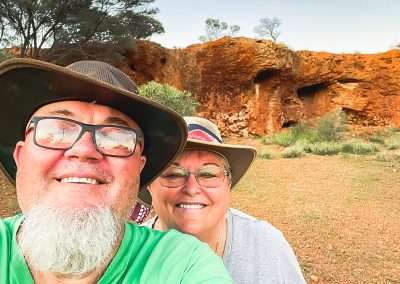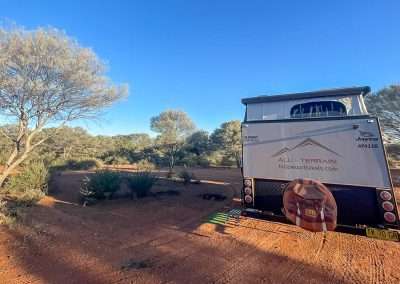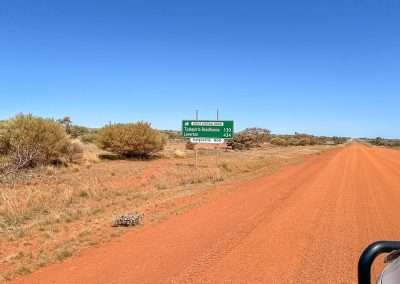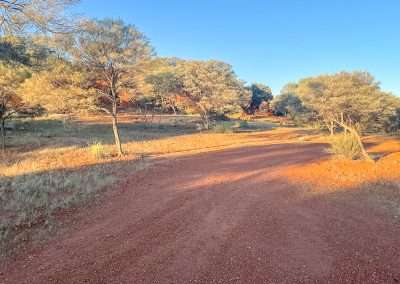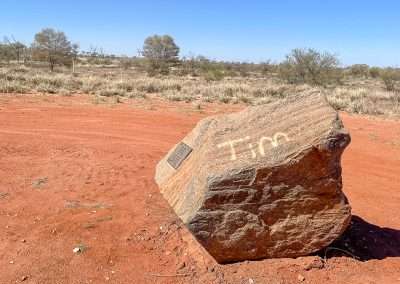Desert Surf Central – Campsite On The Great Central Road
We camped at Desert Surf Central on the Great Central Road. Stunning views, dunes and exploring. One of our all time favourite campsites. Desert Surf Central sometimes called Desert Breakaway is an awesomely spectacular breakaway on the north side of the Great Central Road (GCR) about 121 km east of Tjukayirla Roadhouse. It’s located on one of the few sections of sealed road along the GCR.
It’s a great campsite and there are really cool 360 degree views from the top of the breakaway. The area has been used as a road workers camp over a long period of many years and is well established as a camping spot. The breakaway is about six metres high and is riddled with caves and caverns. I climbed up on top of it while looking for a Geocache (didn’t find it) but the view was well worth the effort.
Desert Surf Central is a spectacular place to stop for lunch or camp. You can spend hours looking around and exploring the caves. Collect firewood along the way as there is none available. There are no services or facilities. If you have a 4wd you can get up on top of the hill to camp although I doubt you’d get a caravan up there. We looked at taking our caravan up on top and decided it wasn’t a good idea. The campsites on the lower level are really excellent anyway so there’s no need to get up on top; however if you can, the views make it worthwhile.
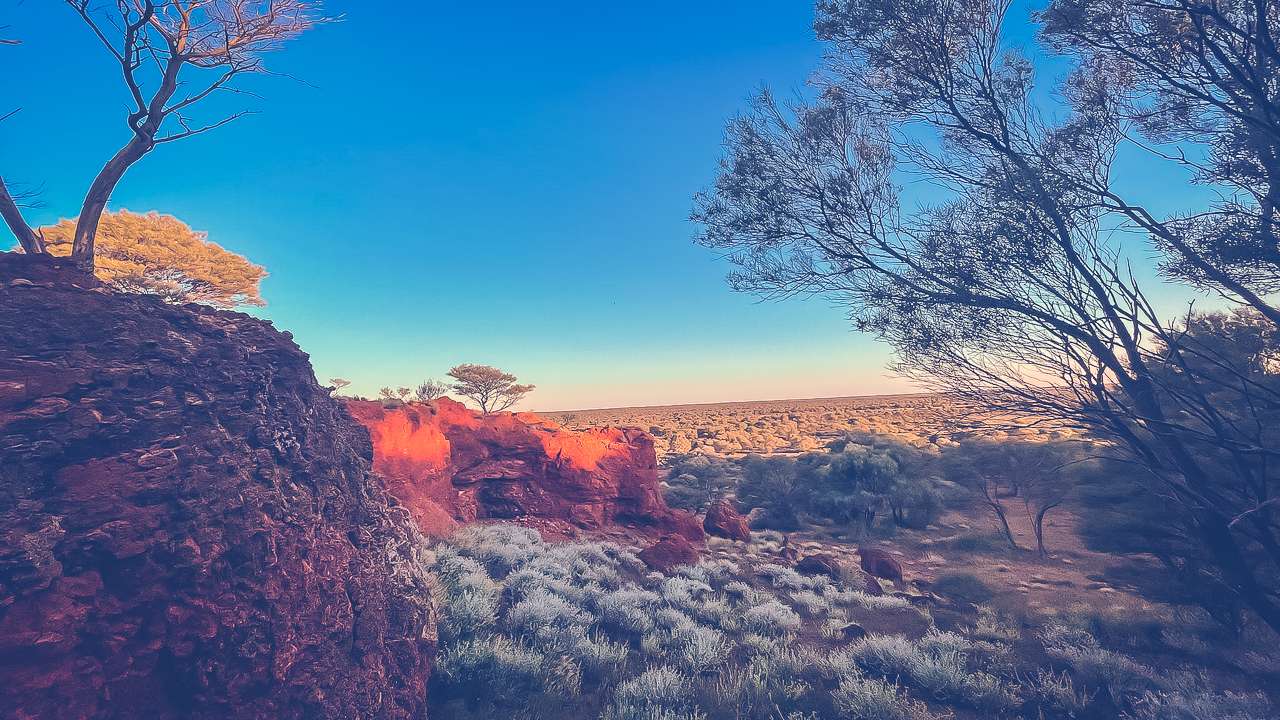
Awesome View At Desert Surf Central
Table Of Contents
- Why Camp There?
- What Is Desert Surf Central?
- The Trip Yarla Kutjarra to Desert Surf Central
- Getting There
- Vehicle Requirements
- What You’ll See Along the Way
- Camping at Desert Surf Central What You Need to Know
- What To Bring
- Camping Facilities
- Is It Safe To Camp At Desert Surf Central?
- Top Things To Do At Desert Surf Central
- History Of Desert Surf Central
- Final Thoughts
- Camping At Desert Surf Central Photo Gallery
- FAQs Frequently Asked Questions About Camping At Desert Surf Central On The Great Central Road
- Is it safe to travel the Great Central Road?
- When is the best time to camp at Desert Surf Central?
- Can you camp anywhere at Desert Surf Central?
- Do I need a permit to travel the Great Central Road?
- Are there any facilities at Desert Surf Central?
Why Camp There?
If you’re an adventurer looking to explore the raw beauty of the Australian Outback then Camping at Desert Surf Central on the Great Central Road should be on your bucket list. Whether you’re a well seasoned outback camper or a city slicker trying to escape into the wilderness Desert Surf Central has something special to offer.
In this guide we’ll walk you through everything you need to know about camping along the Great Central Road at Desert Surf Central: from what to expect on the journey to the best things you can do once you’re there.
What Is Desert Surf Central?
Desert Surf Central is a stunning area of red sand dunes located along the Great Central Road, which cuts through the heart of the Australian desert. It’s named “Desert Surf” because of the appearance of the dunes – large, rolling mounds of sand that resemble ocean waves frozen in time. The surreal wave like formations create a unique landscape perfect for exploring and photography.
Though not officially marked on many map, Desert Surf Central has become a well loved stop for adventurers making their way along the Great Central Road. The Great Central Road stretches from Laverton in Western Australia to the Uluru-Kata Tjuta region in the Northern Territory.
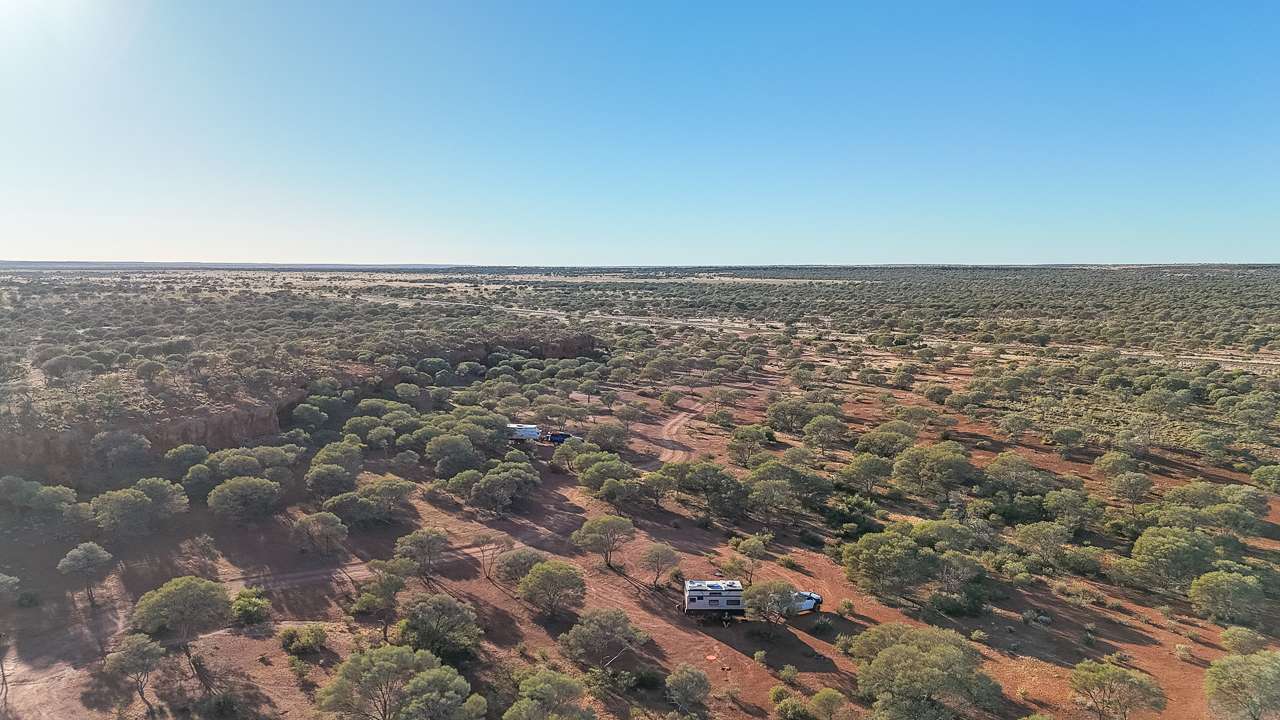
Camped On The Great Central Road
The Trip Yarla Kutjarra to Desert Surf Central
We spent the previous night camping at Yarla Kutjarra (another campsite we highly recommend). We headed off at about 9am. Our first stop was at Warburton Roadhouse for a late breakfast and to top up with fuel. We had plenty of fuel however one of our rules when travelling is to ALWAYS fill up whenever we can. You never know if the next stop will be out of fuel or has closed when you arrive.
Getting There
From Yarla Kutjarra to Desert Surf Central is approximately 220 kilometres. The drive takes you through some of the most remote parts of Australia so it’s essential to be well prepared. It took us about 5 hours to complete the 220 kilometres. We stopped for fuel as well as stopped to look at wildflowers along the way. We stopped at Tims Tree to check out the memorial. There was also a bit of road work going in a few spots that we had to stop for. It was great to see the graders at work maintaining the road.
Camels!
Our best delay was for camels! We had a large group of camels walk across right in front of us and we got a close up look. The leader of the group clearly didn’t like us as he kept a watchful eye on us and gave us a gobful of camel abuse. I don’t know exactly what Mr Camel was saying to us but we got the gist of it quite clearly!
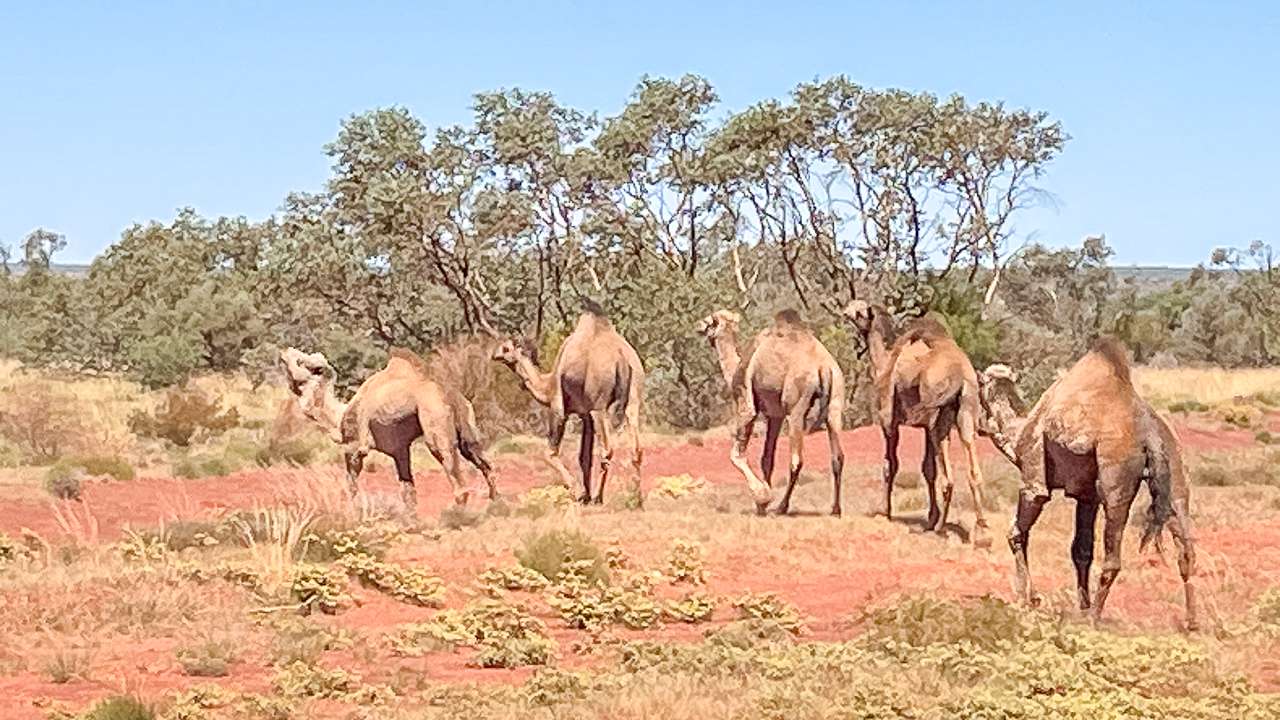
Camels Crossing The Great Central Road
Vehicle Requirements
You’ll need a sturdy 4WD to navigate the often rough and corrugated roads. The Great Central Road is a mix of gravel, dirt and sand and while it’s generally accessible, weather conditions can significantly impact the road’s quality. Ensure your vehicle is in good shape. Pack an extra spare tyre and bring extra fuel and water.
What You’ll See Along the Way
- Spinifex covered Plains: As you drive from Yarla Kutjarra, you’ll pass through wide, flat plains covered in hardy desert vegetation like spinifex and saltbush.
- Kangaroos and Emus: Keep your eyes peeled for wildlife crossing the road. Kangaroos, emus and the occasional camel are common sights in this region.
- Spectacular Red Sand Dunes: As you near Desert Surf Central, the dunes start to rise out of the earth, forming an impressive landscape of deep red sand that contrasts beautifully against the bright blue sky.
- Tims Tree: Tims Tree isn’t actually a tree. It’s a rock with a plaque/memorial for Tim Ballinger 8/11/71 to 14/9/92. There’s a concrete picnic table and a rest area by the roadside.
- Warburton Roadhouse: Warburton Roadhouse is your only place to restock and refuel between Yarla Kutjarra and Desert Surf Central. They usually have a good supply of both fresh and frozen food available.
- Camels If You’re Lucky: We were lucky and got to see some camels crossing the road in front of us.
Camping at Desert Surf Central What You Need to Know
Camping at Desert Surf Central is as remote as it gets. There are no designated camping facilities, no toilets and no running water. You’ll need to be fully self sufficient. It’s a chance to truly get off the grid and experience the Outback as it’s meant to be experienced – wild and untouched.
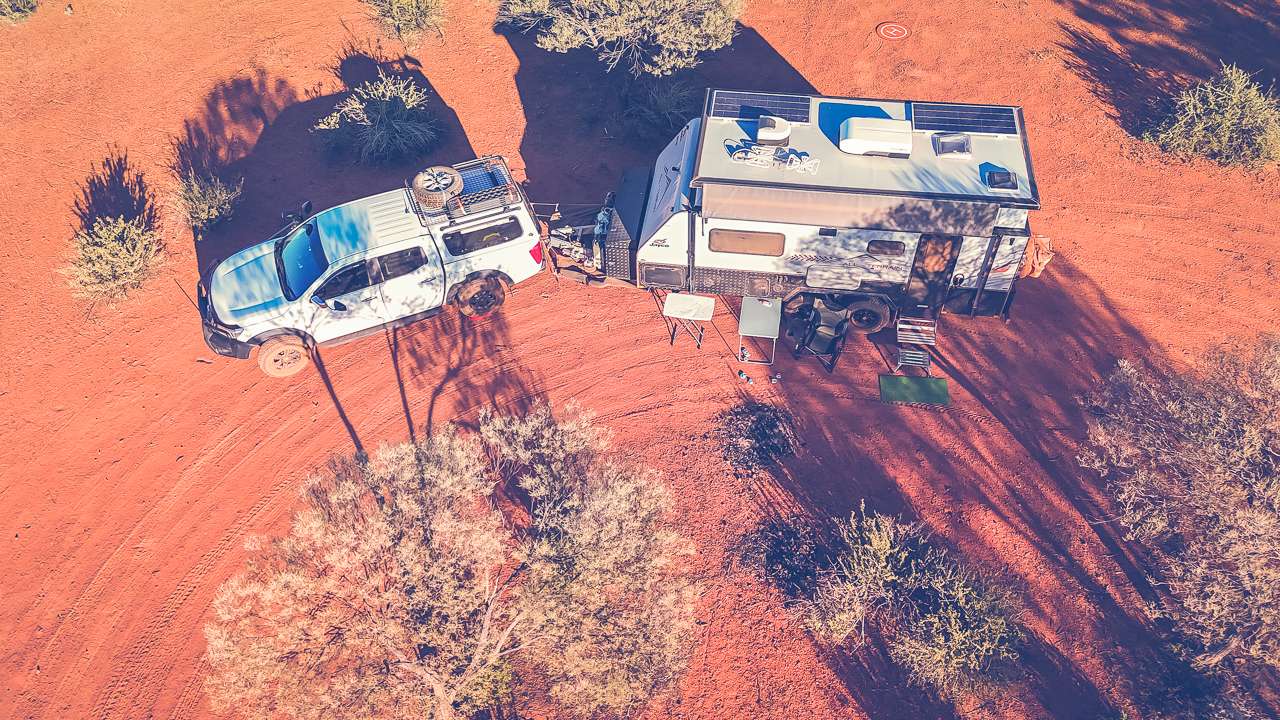
Camping On The GCR
What To Bring
- Water: At least 5-7 litres per person per day for drinking, cooking and cleaning.
- Food: Non-perishable food is essential. Pack enough for the entire trip as there are no shops nearby. You can get very basic supplies at the roadhouses but they are as mentioned very basic. Think a loaf of bread and some canned goods and you won’t be far from the mark.
- Shelter: A good quality tent or swag that can withstand strong winds is a must. We had our caravan and one of those is highly recommended if you’re old and soft like us.
- Rubbish Bags: You’ll need to pack out everything you bring in, including your rubbish. Leave no trace.
- First Aid Kit: It’s essential to have a well-stocked first aid kit, as help is a long way off if anything goes wrong.
- Portable Toilet: While you can dig a hole if necessary a portable toilet is the more eco-friendly, hygienic and preferred option in this pristine environment.
Camping Facilities
- There Are None: Desert Surf Central has no formal camping facilities. This is true bush camping at its best. You’ll need to be prepared for total self-sufficiency.
- Fires: Campfires are allowed, but you’ll need to bring your own firewood as there’s very little available in the area. Always make sure your fire is fully extinguished before you leave.
Is It Safe To Camp At Desert Surf Central?
Camping at Desert Surf Central is generally safe but there are a few risks associated with the remoteness of the area. If you’re well prepared and follow basic safety guidelines you’re unlikely to encounter any problems.
- Wildlife: While dingoes roam the desert, they tend to be shy and will generally stay away from humans. However, make sure to secure all your food properly to avoid attracting animals to your campsite. Kangaroos and emus are common and while they’re not dangerous, it’s wise to be cautious if they get too close.
- Weather: The weather at Desert Surf Central can be extreme. In summer, temperatures can soar above 40°C during the day and drop sharply at night. Winters are more pleasant, with daytime temperatures ranging between 20°C and 30°C, but nights can get chilly. Always check the weather forecast before heading out and be prepared for sudden changes in conditions.
- Isolation: One of the biggest challenges is the sheer isolation. You’ll be far from the nearest town with no mobile phone reception. It’s crucial to let someone know your plans before you go. A lot of people carry an emergency beacon or satellite phone in case of trouble. Starlink is becoming an increasingly popular way of maintaining a connection.

The Breakaways At Surf Central
Top Things To Do At Desert Surf Central
Once you’ve set up camp, it’s time to enjoy everything that Desert Surf Central has to offer. Here are some of the things we got up to.
- Bushwalking
Explore the unique desert landscape on foot. There are no marked trails so you can roam freely through the dunes and surrounding areas. The silence of the desert, interrupted only by the occasional bird or rustling bush is truly magical. Make sure to take plenty of water with you and be wary of getting lost. - Stargazing
With no light pollution for miles around, the night skies at Desert Surf Central are breathtaking. You’ll see the Milky Way in all its glory, as well as planets, shooting stars and maybe even the odd satellite. Bring a telescope if you have one, but even with the naked eye, the view is spectacular. - Photography
Photographers will love the changing colours of the dunes as the sun rises and sets. The contrast between the red sand, blue sky and sparse vegetation makes for some incredible shots. If you’re lucky, you might capture a stunning image of the local wildlife. - Geocaching
There is a geocache located at Desert Surf Central although I’ll be buggered if I could find it. I spent a good half hour looking where the GPS said it should be but I had no luck. - Climbing Up On Top Of The Breakaway
Be careful if climbing as the rock is fairly loose and full of holes that go through it. The view from on top is worth the effort.
History Of Desert Surf Central
The Great Central Road has a rich history primarily as an Indigenous route before European settlement. The route was used for millennia by Indigenous Australians to travel between communities. In the 1950s and 60s the road was developed further to connect remote communities and allow access to prospectors searching for gold. Today the Great Central Road serves as a vital link for Outback communities and it’s become a popular route for adventurous travellers. Desert Surf Central,though not an official historical site is part of this rich tapestry of the Australian Outback. With its untouched dunes and landscape that hasn’t changed for centuries.
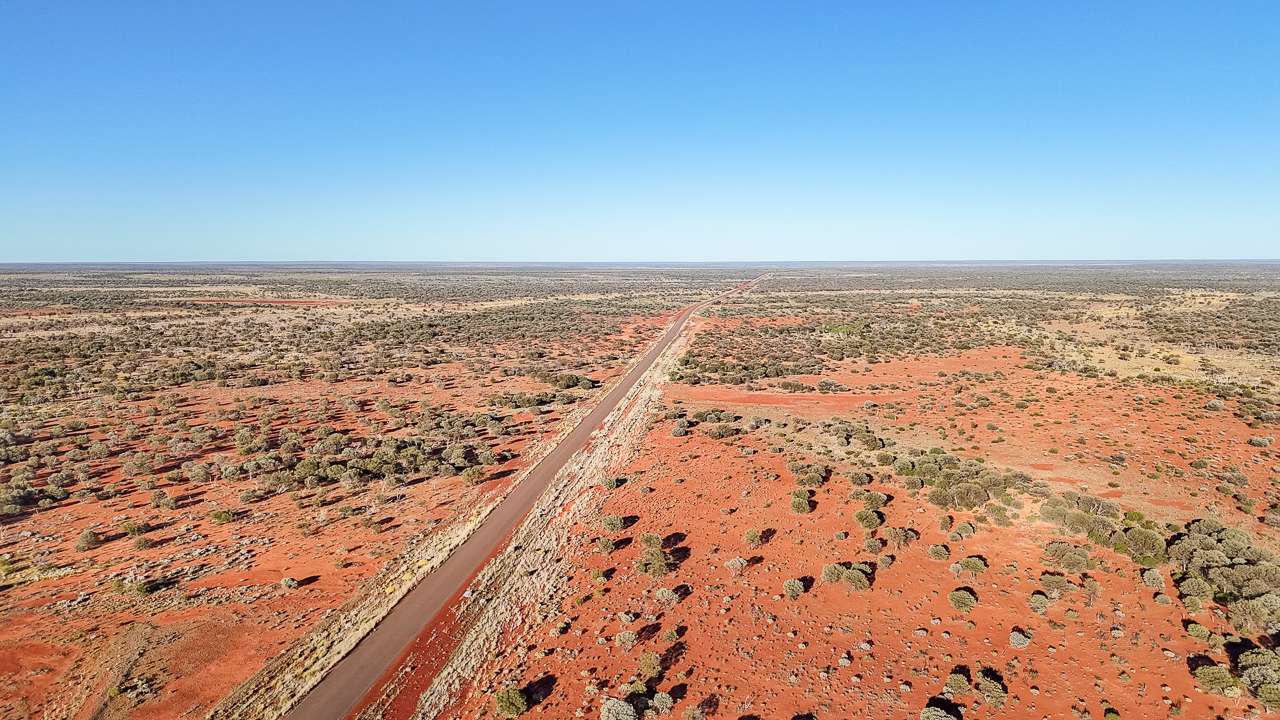
Great Central Road 222km West Of Yarla Kutjarra
Final Thoughts
Great Central Road camping at Desert Surf Central offers a one-of-a-kind adventure into the heart of the Australian Outback. The journey is challenging, but the rewards are immense—stunning desert landscapes, peace and isolation and a chance to reconnect with nature. Head out for an unforgettable camping experience at Desert Surf Central. It’s an Outback campsite you’ll remember for a lifetime.
Camping At Desert Surf Central Photo Gallery
I Climbed Up On Top Of The Breakaway At Desert Surf Central Looking For A Geocache
I Climbed Up On Top Of The Breakaway At Desert Surf Central Looking For A Geocache
Sunset Views At Surf Central On The Great Central Road
Sunset Views At Surf Central On The Great Central Road
FAQs Frequently Asked Questions About Camping At Desert Surf Central On The Great Central Road
Is it safe to travel the Great Central Road?
When is the best time to camp at Desert Surf Central?
Can you camp anywhere at Desert Surf Central?
Do I need a permit to travel the Great Central Road?
Are there any facilities at Desert Surf Central?

